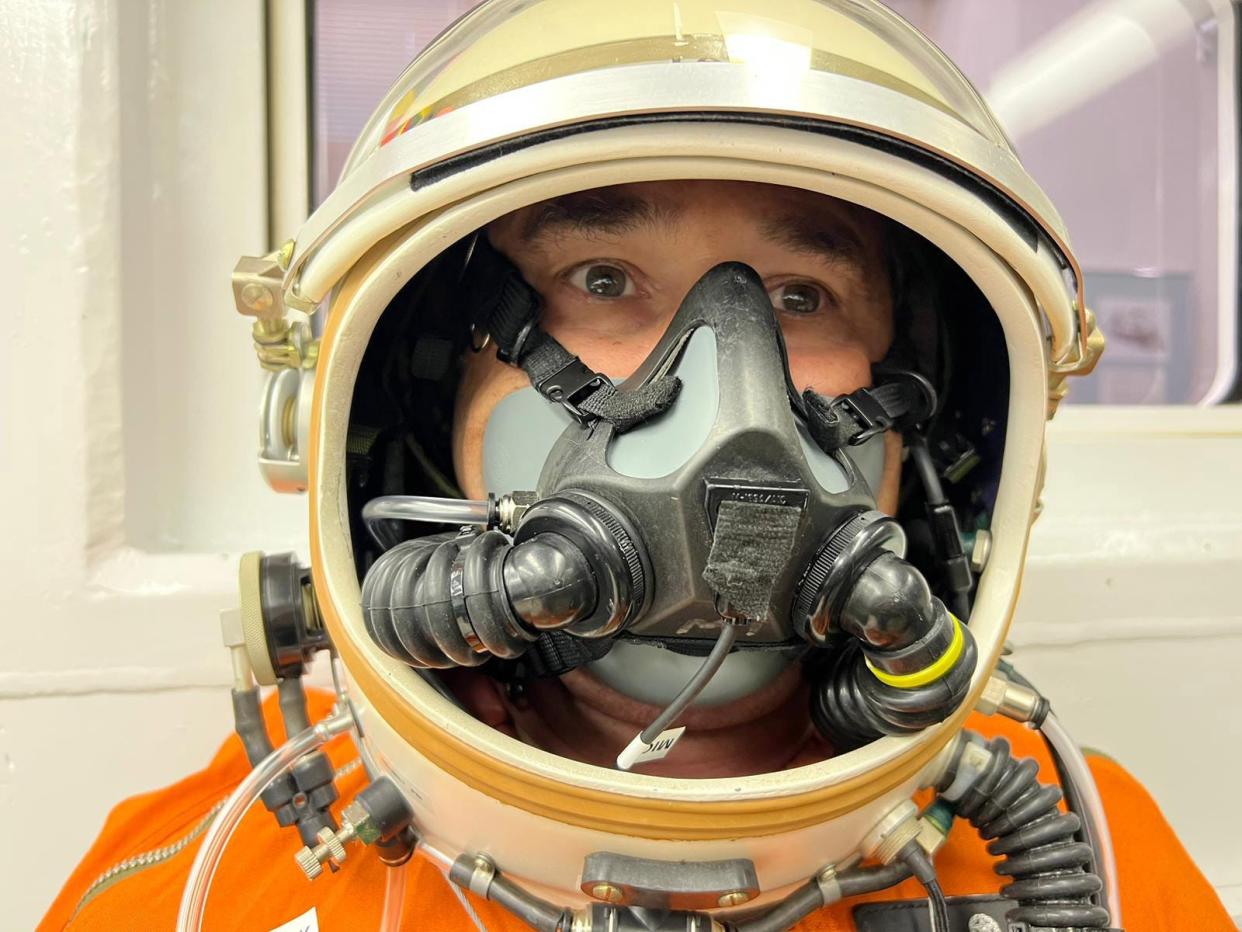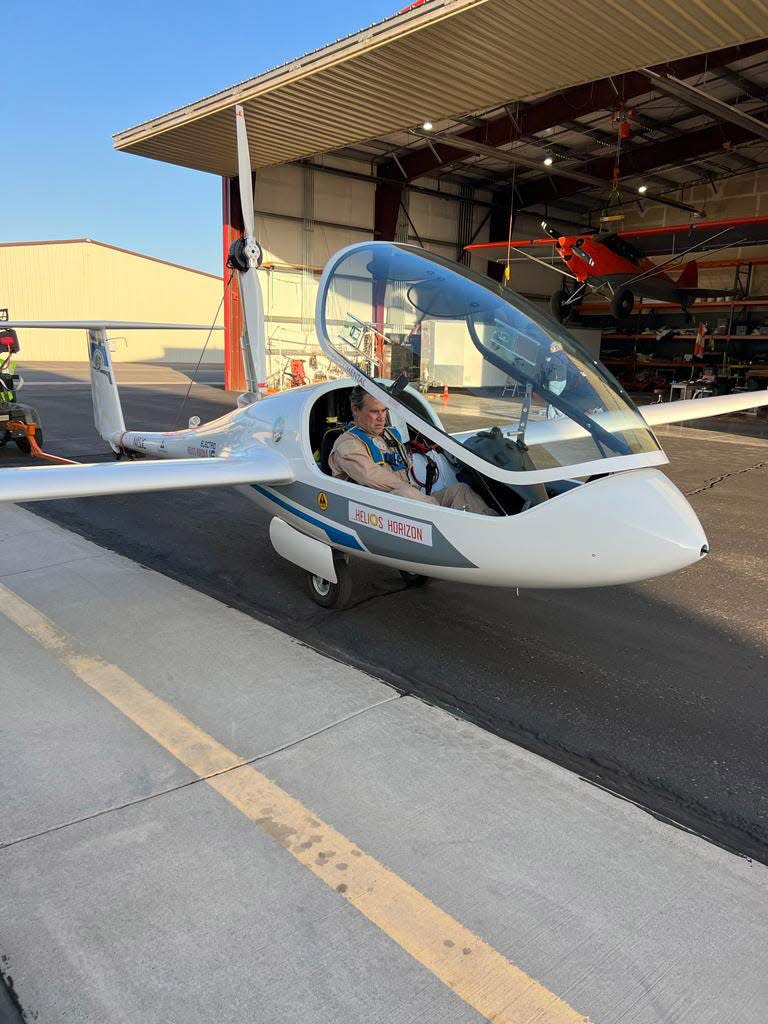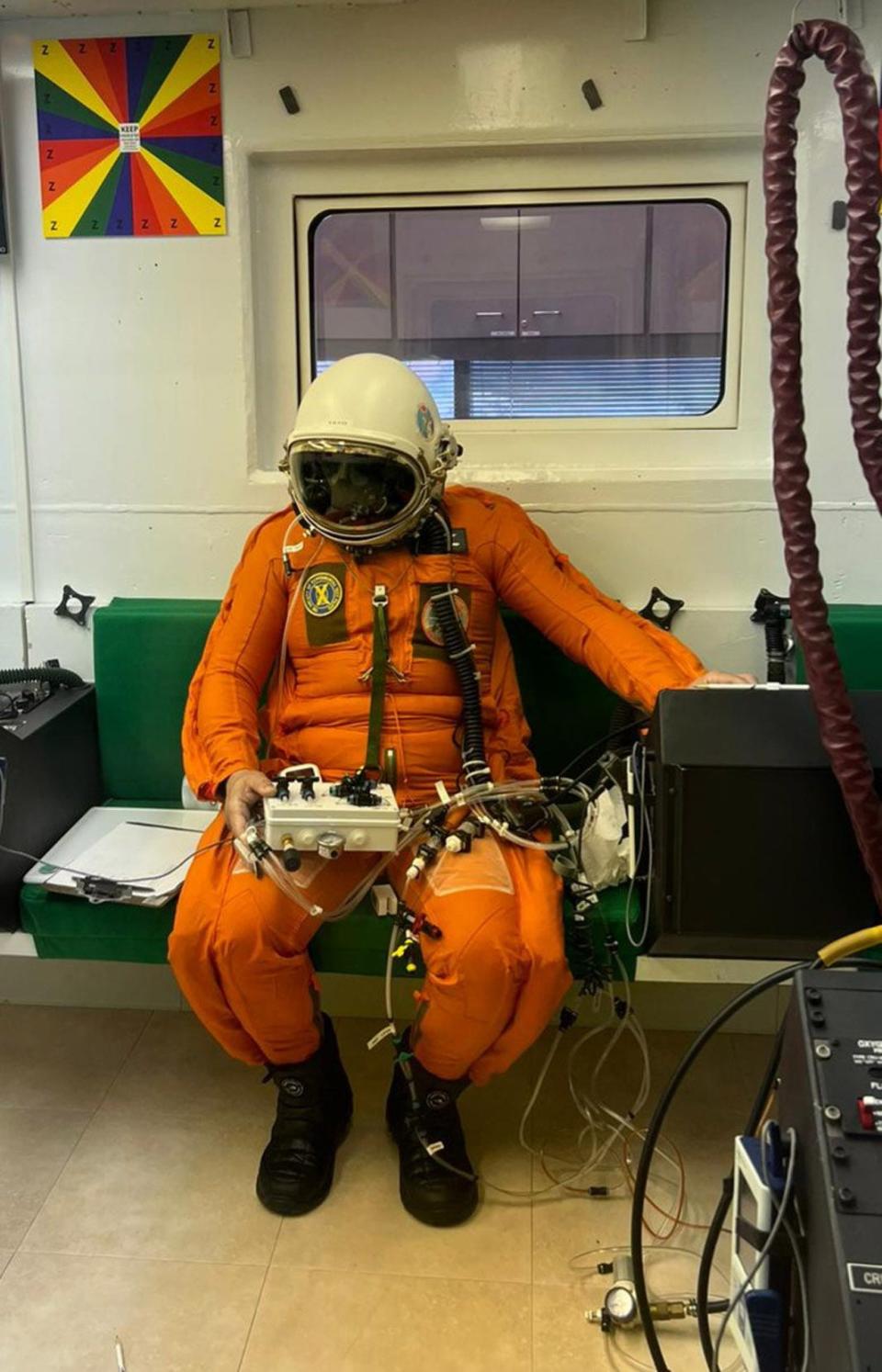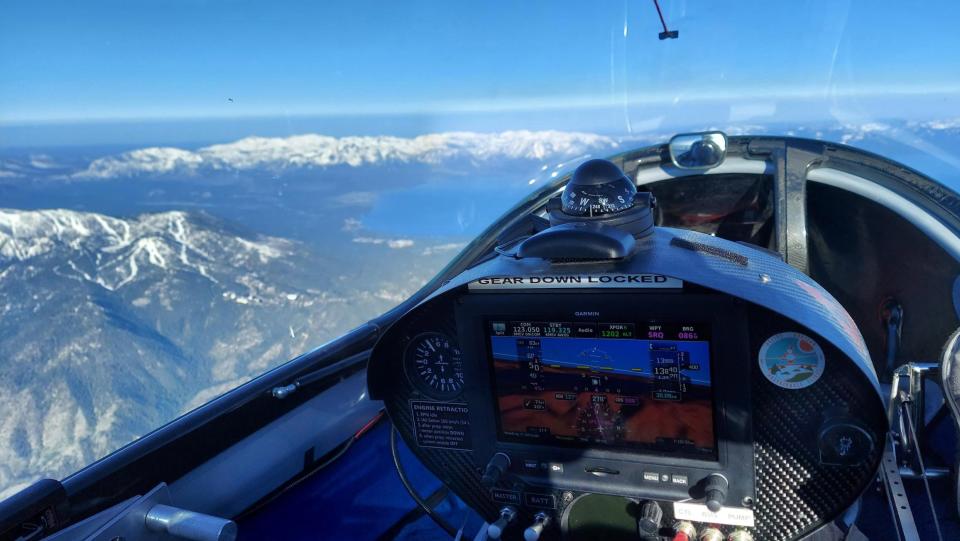Helios Horizon: Suit for Sarasota man's flight into stratosphere passes key pressure test

Engineer and test pilot Miguel Iturmendi cleared a major hurdle in his effort to pilot his electric aircraft, Helios Horizon, into the stratosphere when the partial pressure suit that he will wear on that flight successfully passed altitude tests Nov. 8 in a special lab at the John D. Odegard School of Aerospace Sciences at the University of North Dakota.
During an hour-long controlled test the suit functioned well up to a simulated altitude of 44,500 feet, though Iturmendi must work on the tension of an elastic band that keeps an oxygen mask firmly fastened on his face and replace a faulty mask seal pressure gauge.
“The test was successful, obviously – if you get to the apogee, it’s successful,” said Iturmendi, a Sarasota-based test pilot and engineer who is both chasing world altitude records and providing a spark for electric-powered aviation as an alternative to conventional aircraft that will someday help reduce the amount of carbon dioxide produced by air travel.
Itumendi set a record of sorts for tests conducted in the University of North Dakota’s altitude chamber, said Steve Martin, manager of aerospace physiology operations for the university.
“We take our aviation students on a regular basis up to 18,000- and 25,000-foot chamber flights and we also do rapid decompression chamber flights up to 13,500 feet, but this is the first time since this chamber has been in operation that a human being has been up to 44,000 feet in there,” Martin said.
The altitude chamber allows students to learn how their bodies respond to pressure changes, as well as hypoxia – which can have the same impact as inebriation.
In the case of Iturmendi, a veteran test pilot, the tests were more focused on how well his equipment responded.
Partial pressure suit critical for flight to stratosphere
The partial pressure flight suit is meant for a February or March 2025 attempt to fly Helios Horizon into the stratosphere.
Iturmendi will return to the University of North Dakota next fall to have the suit certified to function at an altitude up to 50,000 feet for 60 minutes.

“Anything over 35,000 feet, in an unpressurized aircraft you need either a full-pressure suit – that’s also known as an astronaut suit, internal vehicle activity suit like you see the astronauts on the space shuttle and so on – or you need what is known as a partial pressure suit,” Iturmendi said.
Most partial pressure suits are designed to be effective for a short period of time.
Iturmendii worked with Dr Pablo De Leon, chairman of the university’s Space Studies Department on design and testing of his suit.
De Leon is currently working with NASA to design suits and habitats that would be used both on the moon and Mars.
The suit custom built for Iturmendi is being designed to help him survive for 60 minutes at high altitude.
Lakewood Ranch residents Mike and Tina Willeford helped finance the research for Iturmendi’s design, while the university covered the cost of testing in its altitude chamber.

For the tests, Iturmendi sat in his suit and breathed pure oxygen for about 70 minutes to minimize the presence of nitrogen in his blood, before air was removed for the chamber to simulate the ascension of an aircraft.
Every 5,000 feet the climb would level off and a monitor would quiz him on pressure and altitude readings.
“They can read them but they wanted me to read them,” Iturmendi said. “I would write them and they would give me a math question for a cognitive test.”
The next altitude goal is 32,000 feet
But first, in early 2024, Iturmendi plans to return to Minden, Nevada – near Lake Tahoe – to pilot the Helios Horizon and exceed the 32,000-foot world record for electric-powered flight.
For that mission, Iturmendi can wear the same suit he used in June to set two world records for electric flight in an aircraft lighter than 500 kilos.
The main difference between that flight and his next record attempt – which could happen as soon as this February – is that he will use four batteries, instead of two.

For the flight into the stratosphere, Helios Horizon would be powered by a larger propeller and ride on longer wings.
A native of Spain, Iturmendi earned the Living Legend of Aviation Award in 2019 for flying at a then-record 66,000 feet as test pilot of the Perlan 2 glider.
He has raised money on his own to finance Helios Horizon and relied on in-kind contributions from friends – such as De Leon – to trim costs.
He is planning a small showcase of the aircraft on Jan. 13, at a special information and fundraising event, which has an attendance cap of about 75 people, though a video may later be released on the web.
For more information, contact Javier Merino at javier@helioshorizon.info.
This article originally appeared on Sarasota Herald-Tribune: Custom suit for Sarasota pilot's stratospheric flight passes test

